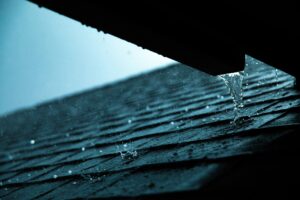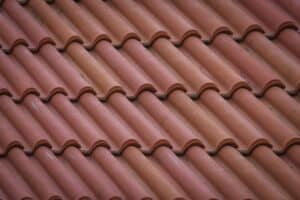Deciding between a standing seam vs screw down metal roof? This guide covers their differences in cost, installation, and durability to help you choose the right one.
Understanding Metal Roofs: The Basics
Standing seam roofs are a clever design—the panels click together at the edges, hiding all the stuff that holds them down. It’s like having a seamless shield over your house. Plus, the metal can breathe a bit when temperatures change.
Screw down roofs take a simpler route—they’re just panels screwed straight to your roof. Sure, you can see all the screws, but that’s what makes them cheaper and a little bit easier to put up.
These roof panels are designed to provide a seamless shield over your house. You’ll spot standing seam roofs on homes and office buildings. They look modern and clean with no screws in sight. Screw down roofs show up more on barns and garages. Some folks actually like seeing those neat rows of screws. It gives off that classic metal roof look.
Here’s what really matters when picking between the two: your budget, who’s putting it on, and how long you want it to last. Standing seam costs more now but causes fewer headaches later. Screw down roofs are easier on your wallet today, but those screws might need some attention down the road.
Definition of Standing Seam Metal Roof

A standing seam metal roof is a type of metal roofing system characterized by raised seams, or vertical legs, that rise above the level of the panel’s flat area. The seams are formed by folding the metal panels into a vertical position, creating a watertight seal. Standing seam metal roofs are considered a high-quality system, commonly used on architectural and commercial buildings, due to their durability, longevity, and sleek appearance. They are also known for their concealed fasteners, which are hidden from view, providing a clean and modern look.
Definition of Screw Down Metal Roof
A screw down metal roof, also known as an exposed fastener metal roof, is a type of metal roofing system where metal panels are fastened directly to the roof deck using visible screws. The screws are exposed to the elements, and the panels are overlapped to create a watertight seal.
Screw down metal roofs are a cost-effective option, with a simpler installation process compared to standing seam metal roofs. They are suitable for residential and commercial buildings, but may not be the best choice for harsh weather conditions or low-sloped roofs.
How They’re Different
It’s not just about looks; these roofs are built differently from the ground up. Standing seam roofs need everything to be just right. Proper installation is critical for the longevity and performance of standing seam roofs. The measurements have to be perfect, and you need special tools to get those seams locked tight.
The panels have a clever 1-inch fold at the edge that lets them hook together. For some jobs, you’ll need a special machine called a seamer, and longer panels might need special clips so they can expand without buckling.
Screw down roofs are more forgiving. That’s why some handy folks tackle these as DIY projects. You line up the panels, drill in the screws, and you’re good to go. The catch? Those screws need checking every 20 years. Some might need replacing. They each have a rubber washer that provides a watertight seal for years, but over time that rubber can wear out. When it does, the screw hole can be an entry point for water–a no-no for roofs! Check for failures at these points every 15-20 year is a good practice with screw-down roof panels.
How They Look
Standing seam roofs have that modern, clean look. No screws showing, just smooth lines running up your roof. It’s why architects love them—they make any building look more expensive.
Screw down roofs tell a different story. Those visible screws give them an honest, industrial feel. Some people really dig that look, especially on more traditional buildings.
Standing Up to Weather
Here’s where things get serious. Standing seam roofs handle wild weather like champions. When the sun bakes your roof or snow weighs it down, the panels can shift a tiny bit without causing problems. This ability to shift is due to thermal expansion, which allows the metal to expand and contract with temperature changes.
Water just slides right off—there’s nowhere for it to sneak in. The heavy-duty version (they call it mechanical seam) is even tougher. It’s built for places that get hammered by storms.
Screw down roofs can handle their share of bad weather too, if they’re put on right. But those screws can be trouble spots. When the weather goes from hot to cold and back again, they can work loose over time.
Long-Term Perks of Standing Seam Metal Roofs
Let’s talk about why some folks think standing seam roofs are worth their price tag.
They’re like a long-term investment in your house. They last (almost) forever, barely need any work, and might even put money back in your pocket through better insurance rates and a higher home value.
How Long They Last

Standing seam roofs are built to stick around. We’re talking 40 to 50 years of solid protection. The secret’s in how they’re put together – those interlocking panels keep water out better than almost anything else out there. Some metals, like copper and aluminum, don’t rust easily, so they keep looking good for decades.
Screw down roofs? They’ll give you 20 to 30 years if you take care of them. Screw down panels are particularly susceptible to leaks due to the exposed fasteners. All those screw holes are like tiny paths for water to sneak in. When the weather goes from hot to cold and back again, those screws can work themselves loose.
But there’s good news: Most problems are easy to fix if you catch them early. Keep an eye on those screws. If they start getting loose, tighten them up. Replace any rubber washers that look worn out. And every few years, put some new sealant around the screws. A little attention goes a long way.
Here’s where standing seam really shines. Once it’s up there, it pretty much takes care of itself. Those locked seams keep water out like a champ. About all you need to do is check the seams once in a while and maybe add some sealant here and there.
Insurance and Home Value
Insurance companies love standing seam roofs. They’re tough, they rarely leak, and they stand up to nasty weather. That often means lower insurance bills for you. When planning a roofing project, the long-term benefits of standing seam roofs can lead to significant savings on insurance.
When it comes time to sell, a standing seam roof is like a selling point in itself. Real estate agents can’t wait to tell buyers about it. “This house has a standing seam metal roof” sounds a lot better than “You might need to replace the roof in a few years.”
Where Each Type Makes Sense
Standing seam shines on houses, especially if they’re heated and cooled. This roof system is particularly effective in managing the thermal expansion and contraction caused by temperature changes. Why? Because the temperature inside your house changes all the time. Hot in winter, cool in summer. That makes the roof expand and contract, and standing seam handles this movement no problem.
Screw down can work on houses too, but you’ve got to be careful about the roof’s slope. Get that wrong, and you’re asking for trouble.
Businesses with commercial buildings often go for standing seam as well. It costs more, sure, but business owners like knowing they won’t have to think about their roof for decades. Plus, it handles those long panels you need on bigger buildings without causing headaches.
Screw down roofs can make sense for simpler buildings like storage units, farm buildings, or car ports. Places where you need a solid roof but don’t need all the bells and whistles.
Installing a Standing Seam Roof

This isn’t a weekend DIY job. There’s a whole process to get it right.
Getting the Base Ready
First up, your roofers need to check out what’s underneath. They’re looking for any soft spots or damaged wood that needs fixing. If you’ve got an old metal roof up there, they might need to adjust those support beams we talked about earlier. Then comes a special waterproof layer – professional roofing contractors call it underlayment. They’ll also put on metal edges to guide water away from your walls.
Adding Protection and Clips
Next comes the tricky part. Those clips we mentioned? They need to go in just the right spots. Too far apart, and your roof won’t be as strong. Too close, and you’re wasting money. The clips have to line up perfectly so your panels can move when the weather changes.
Locking It All Together
The final step is where the magic happens. Panels go down one at a time, each locking into the next. Roofers use a special machine to pinch these seams tight. When they’re done, you’ve got a roof that’s sealed up tight against wind and rain.
Wrapping It All Up
Both standing seam and screw down metal roofs offer unique advantages and challenges. These roof systems are designed to meet different needs and preferences, offering a range of benefits depending on the application.
Standing seam metal roofs provide better durability, minimal maintenance, and that great aesthetic appeal, making them a worthwhile investment for homeowners seeking long-term value. Although they come with higher upfront costs, their extended lifespan and potential insurance savings can offset these initial expenses.
Screw down metal roofs, on the other hand, are more budget-friendly and easier to install, making them suitable for DIY projects and non-living spaces. However, they require more frequent maintenance and can be prone to leaks and corrosion over time. Ultimately, the choice between these two roofing systems depends on your specific needs, budget, and preferences.
At Rockland Builders, we’ve been putting metal roofs on homes and businesses across central and southeastern Pennsylvania for years.
We stand behind our work 100%. That’s why every roof we install comes with a lifetime warranty on our workmanship. Got questions? Give us a call. We’ll come out, take a look, and walk you through your options—no charge, no pressure.






